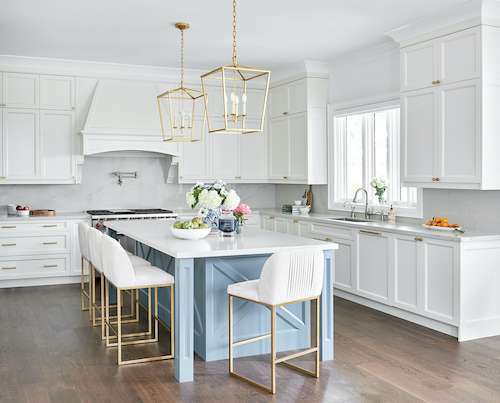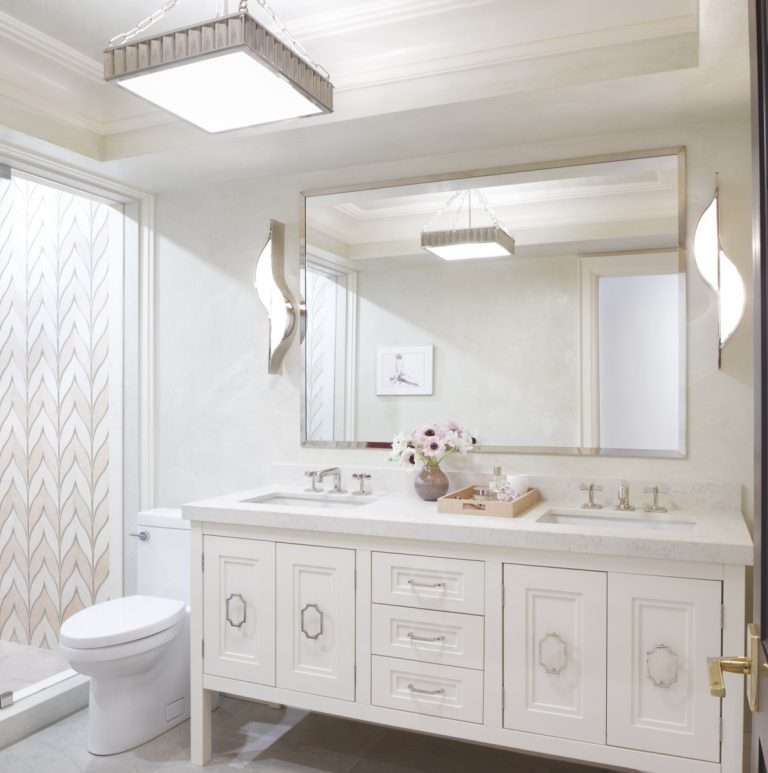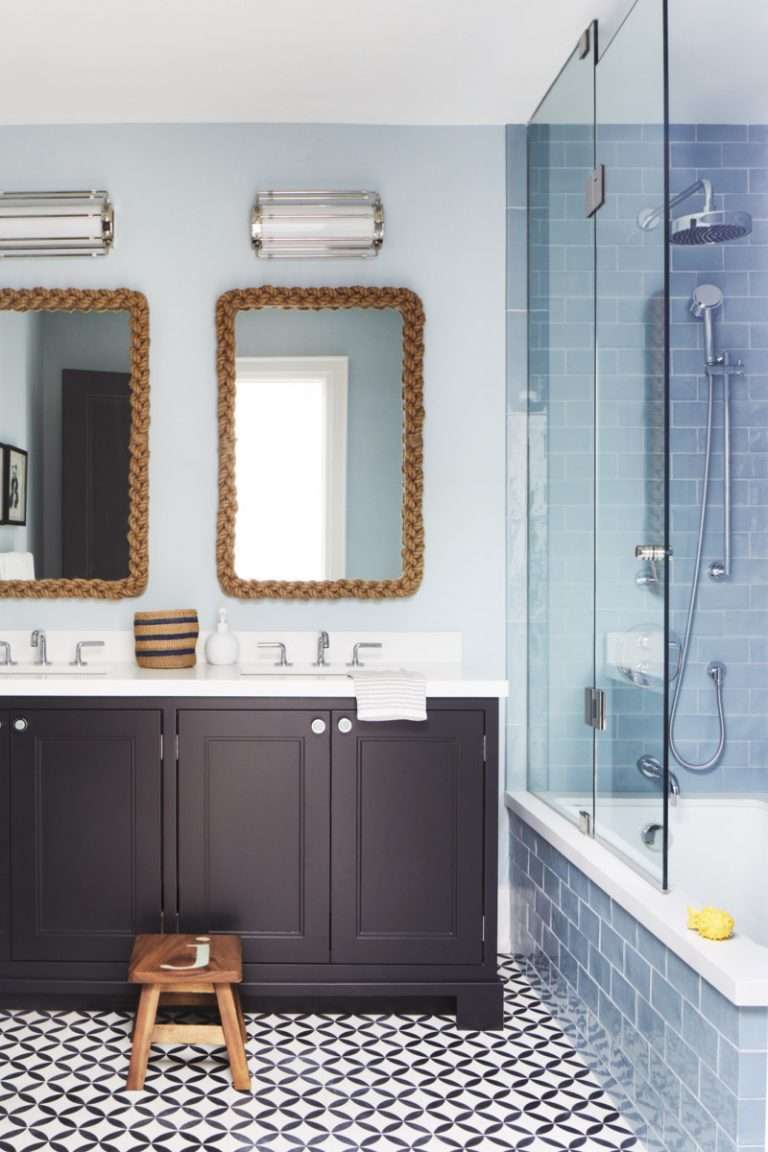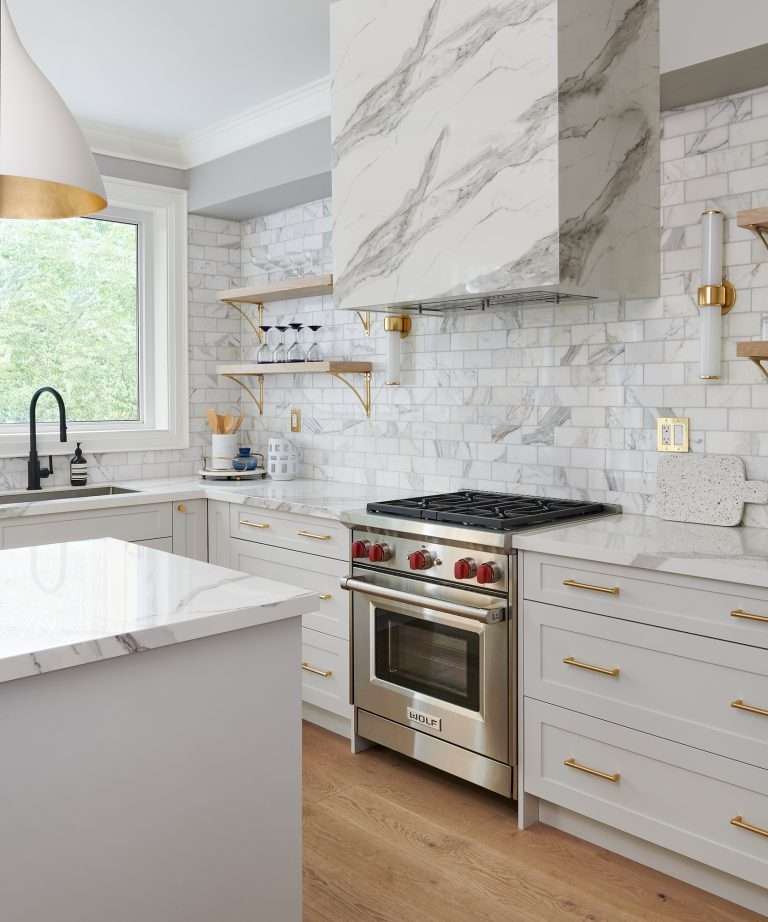How to Choose a Countertop

When working on projects that involve kitchens and bathrooms, we are often asked what kind of material we recommend for countertops. After years in the industry, you might think that we have a go-to answer! In reality though, when it comes to countertops, the choices are infinite making it impossible to select a “one size fits all” solution. Finding the “right material” is primarily dependent on two major factors; first, a client’s personal aesthetic preferences and second, their lifestyle. Every countertop comes with its own unique look and also with its own set of pros and cons so it’s truly a matter of exploring and discovering in order to make an educated selection. We could easily write a novel on the subject but to spare you from reading a Tolstoy-length post, we thought it best to simply highlight some of the options with photos of some recent projects…
Natural Stone
Marble
When most people think of countertops, one of the first materials that come to mind is marble. This natural stone is timeless, elegant, and comes in a wide variety making it an incredibly popular choice, even with all the manmade options available today. Although marble is durable enough to handle the amount of use a countertop sees, it is also soft enough for stonemasons to manipulate into custom cuts and designs.
When choosing marble though, it’s important to consider where it is being installed, who uses the space, and what it is being used for, as it does not win the award for being a low-maintenance material. An incredibly porous stone, marble tends to soak up spills, can be affected by acidic substances (such as lemon juice) and is susceptible to scratches. Regardless of maintenance issues though, marble remains a wonderful choice due to its variety, wide price range, and ability to work in a variety of settings and styles. Plus, selecting less shiny finishes (such as a honed finish) can minimize the appearance of wear and tear. Above are a few examples of our work with marble… Carrara marble with a blue vanity, Calacatta marble for a white kitchen with gold accents, chocolatey Eramosa marble for an elegant powder room vanity, and Nestos marble to complement a lilac backsplash.

Limestone
If you’re looking for a natural stone surface at a somewhat friendlier price point to marble or granite, limestone is a great alternative. Typically chosen for its neutral-sandy tones, limestone has a tendency to appear warmer and less shiny than marble. Limestone is a great addition to spaces if you want to achieve a richer or more rustic look. That said, like marble, limestone is a porous stone that is sensitive to spills and acidic substances. As long as it is maintained and sealed properly though, it is without a doubt an elegant option as shown by our bathroom project above, which features a Bianca Perlino limestone countertop.
Dolomite
As yet another alternative to marble in the natural stone category, there is dolomite. Dolomite is another type of sedimentary rock that is known for its varied appearances and translucent properties. Somewhat more affordable than marble or granite but able to achieve a similar appearance, dolomite is incredibly hard and therefore durable. Like its cousins, it’s subject to the same wear and tear concerns and will need similar care and maintenance. The kitchen above features Matarazzo dolomite, which comes from Brazil. Unlike the previous examples though, this client selected a leathered finish for their countertops, a newer style that has gained more traction in the design world in recent years. This type of finish has a soft sheen that is less polished than what you typically see with marbles and granites and really showcases the beautiful textures in the stone.
Manmade Alternatives

Quartz
As lovely as the aforementioned materials are, the reality is they are not practical for every space. When it comes to laundry rooms, kids’ bathrooms, commercial spaces and the like, we often urge our clients to consider manmade options due to their superior durability and low maintenance.
Although the term manmade is often met with a grimace, the reality is that they have come a long way. Available in a wide variety of colours and designs that mimic natural stones, the options are endless. If you’ve ever heard someone refer to Caesarstone well, we’re here to dispel a common misunderstanding. Caesarstone is a wildly popular company (NOT a material) that creates manmade quartz countertops… but we digress. The point is, that quartz is incredibly durable and easy to clean and maintain, which makes it an excellent choice for high-traffic areas. Above is a great example of a white quartz countertop installation in our client’s kids’ bathroom.

Porcelain
Also in the manmade category is porcelain. Although porcelain countertops are made from a slightly different mix of materials to quartz, they are also highly durable and non-porous and come in remarkably realistic designs that mimic natural stones. Our client’s kitchen above is a perfect example of the possibilities of achieving the look of “the real deal” with this low-maintenance material.

